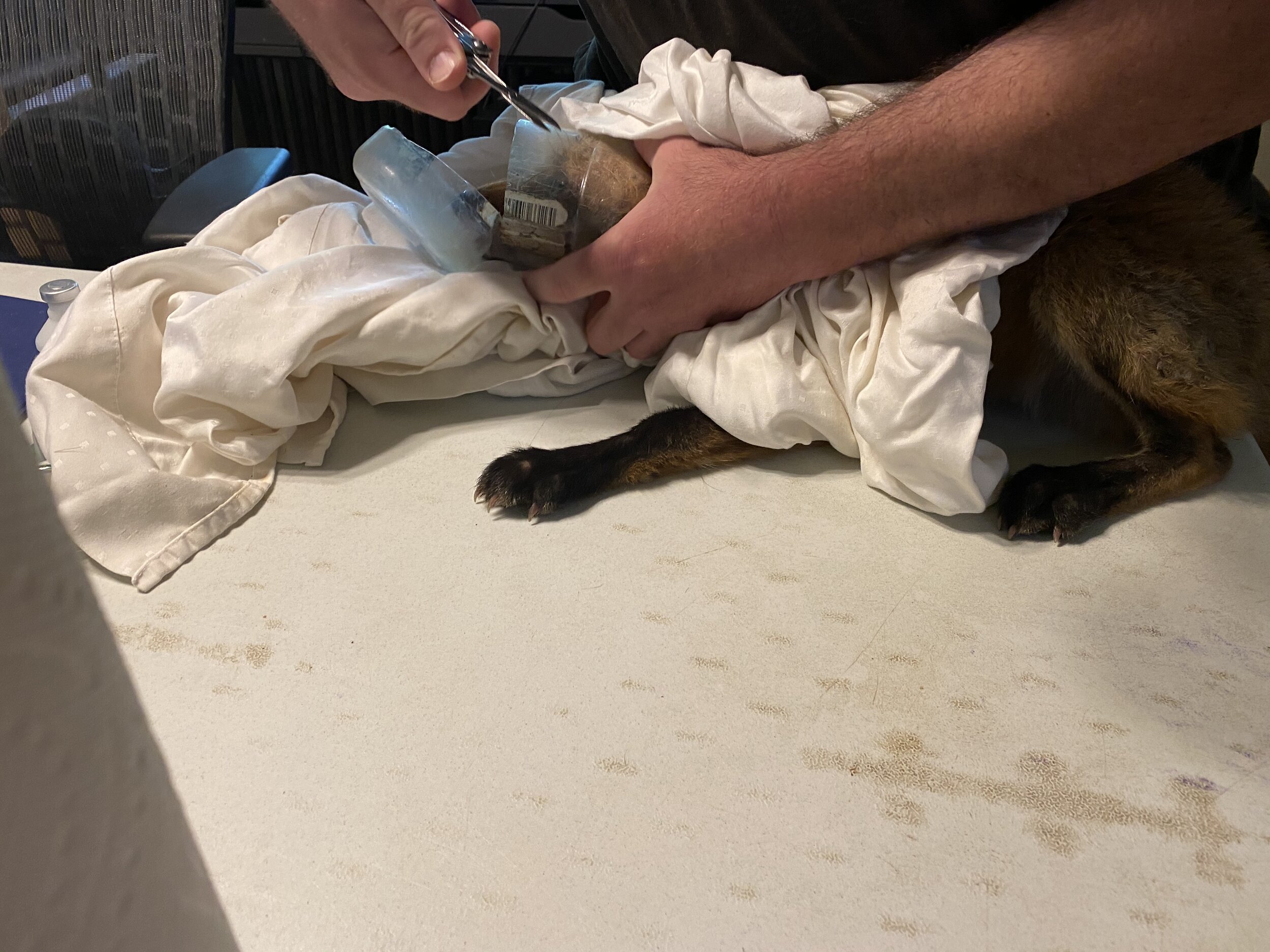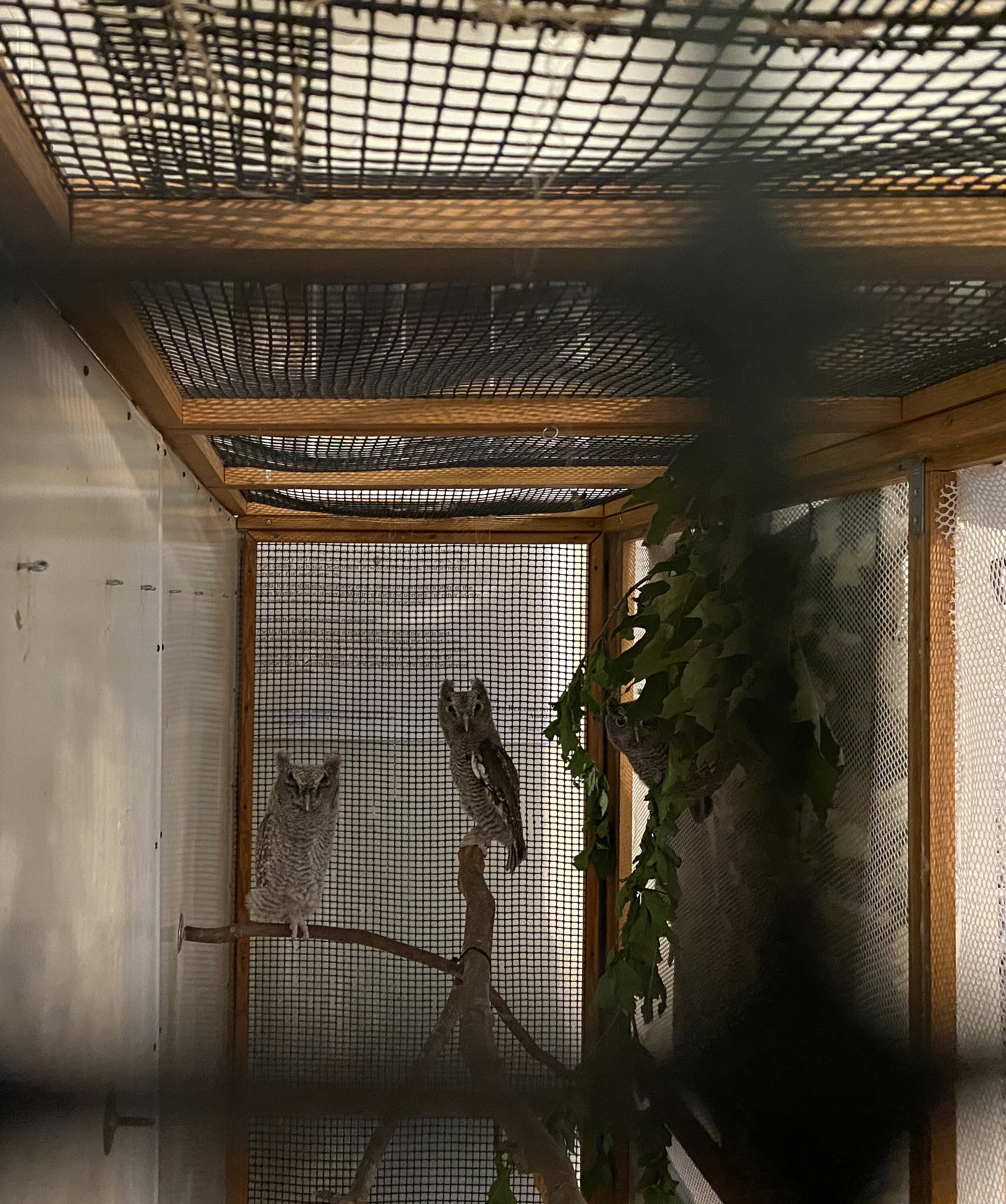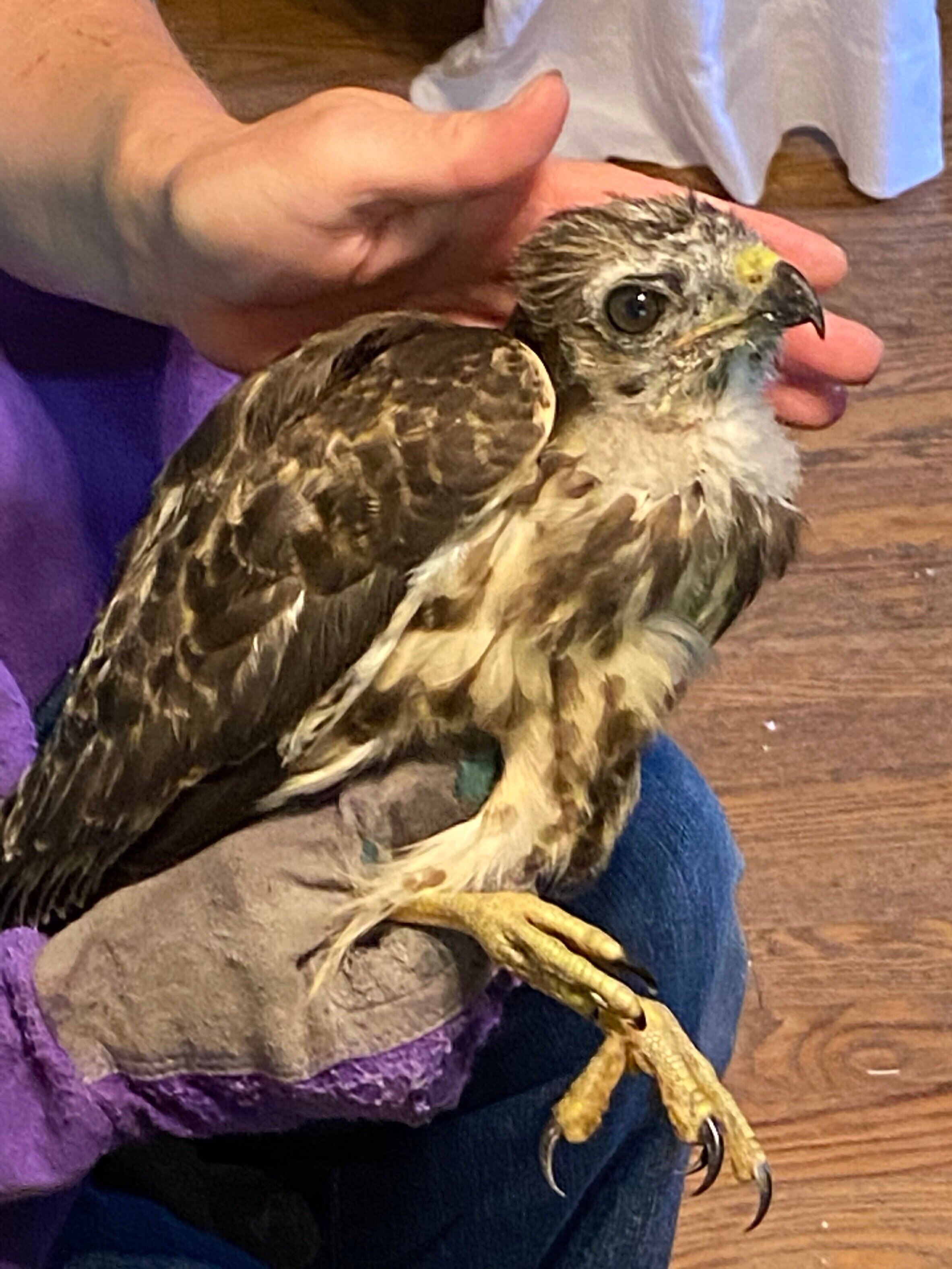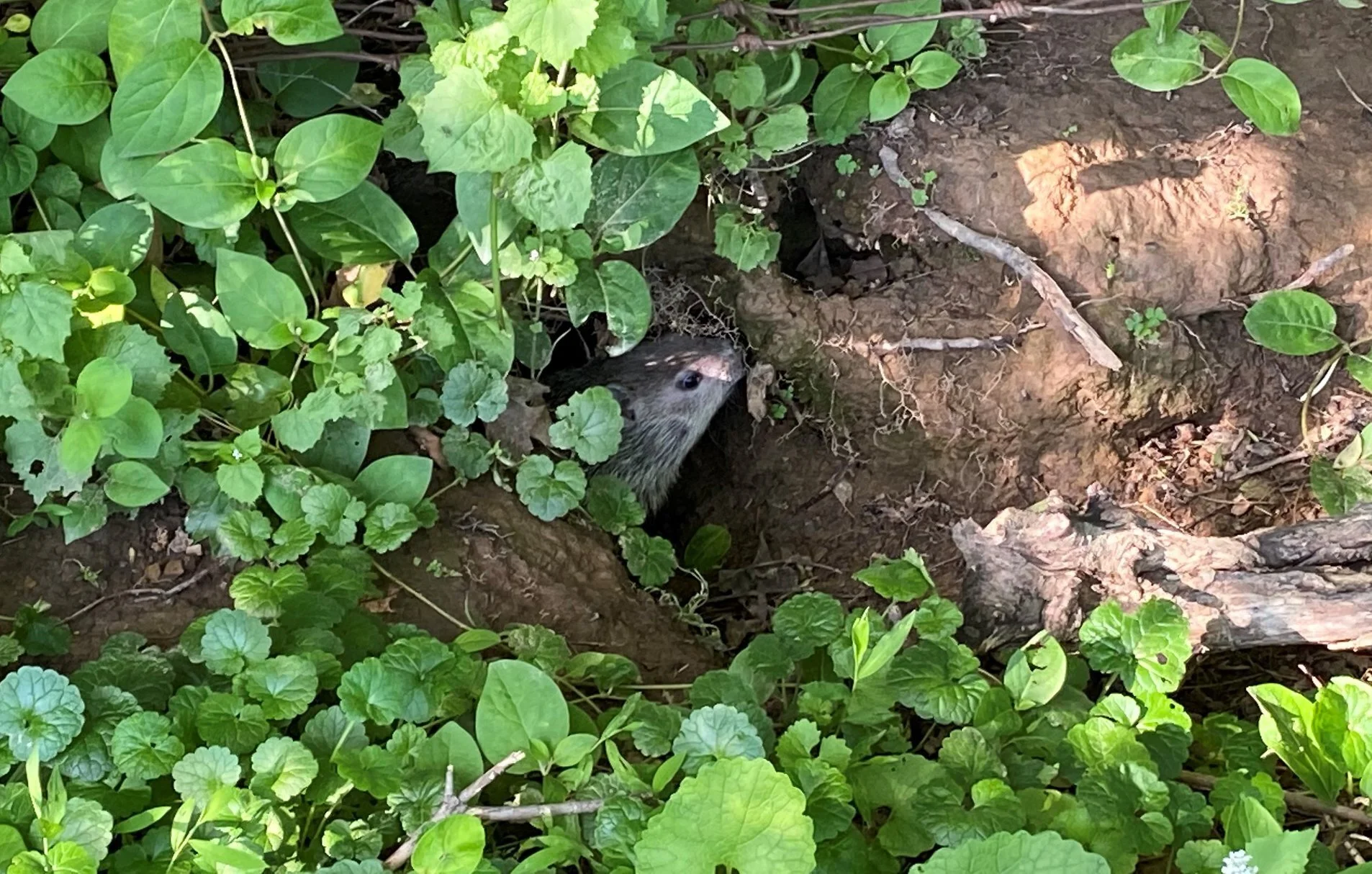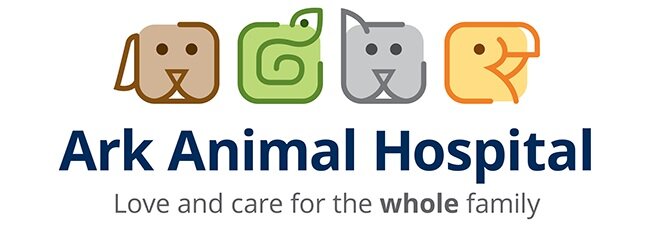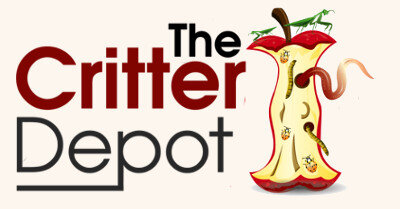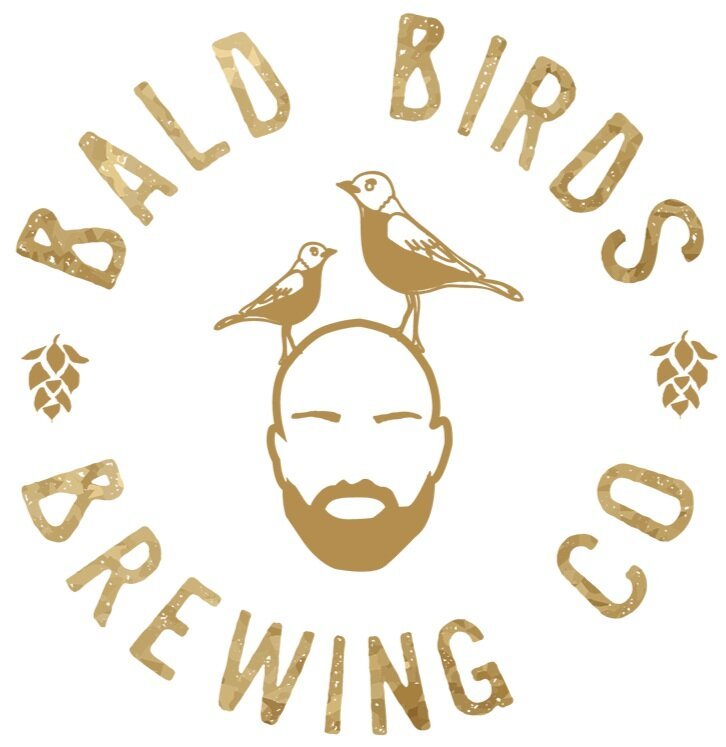The Kingbird is a type of flycatcher, grabbing insects in midair. A couple of attributes may contribute to its name. Firstly, Kingbirds have hidden crowns of red or yellow feathers that are flashed when a potential predator is encountered. Secondly, they sit atop the world on the highest perches and survey their domain. Our little patient, here, will grow up to preside over a kingdom of her own.
Mother Opossum
Momma opossum was struck by a car. Here, she receives food and recovery support as she nurses her pouch full of babies.
Baby Chimney Swifts Admitted
As their name suggests, these swifts nest in caves, on cliffs and in chimneys. Among other interesting features like their nimble aerial acrobatics, they roost by hooking onto vertical surfaces. They are able to achieve this feat due to the unusual configuration of their feet. As opposed to perching or climbing birds, two of the Chimney Swifts’ toes can point backwards or forwards (Pamprodactyl, below), allowing them to hang out in unlikely places.
Prepping for Treatment
This hawk is about to be treated with medication and given drops for an eye wound. A speedy recovery!
Ducklings
Though from different families and of different ages, these ducklings have formed a flock, with the older ones even being protective of the younger ones.
Fox Rescue
This juvenile fox came in today with his head trapped in a plastic jar. He’d been this way for several days. Our rehabilitator, with the help of his Leatherman tool, was able to cut and remove the jar.
Eastern Screech Owls
Can you spot all three of the juvenile screech owls in this photo?
Turkey Vulture
Patient 2360, a turkey vulture, enjoying the afternoon sunshine.
Virginia opossum
The opossums first line of defense when afraid is to hide, but when necessary it will hiss, growl, bare its teeth, and even lunge to scare potential threats. These juveniles are practicing their tough guy look.
Blue Jays
We’ve cared for a number of Blue Jays this spring. These two are gaping, or asking to be fed.
Juvenile Red-tailed Hawk
Philly ACCT brought us this juvenile red-tailed hawk a few weeks ago. He’s being held by one of our volunteers while he waits to be fed. He’ll stay with us for the summer while he learns to hunt and feed himself and develops his flying skills.
Kestrel
The kestrel is a small falcon that eats insects and small prey. This young kestrel is resting between bites while being hand fed.
Life on the Premises
We don’t just dig our patients at Philly Metro, we’re also interested in the life in the wild that share our space. This colorful character, possibly a Cherry Millipede, was seen strolling through our parking lot Saturday.
Box Turtle Injuries
Though tough and able to protect from many dangers, a turtle shell was not designed for the risks of the modern world. During the last few weeks of May, we received a number of turtles with shell injuries. Most had been hit by cars, probably while crossing the road in search of a place to lay eggs. This turtle has an injury to his plastron, the bottom shell, and will be with us while it heals.
Check Out These Cute Kits!
These four little skunk kits are being cared for while their mother recovers after being hit by a car over the weekend. They’re taking formula and learning to transition to solid foods. Check out an article on skunks by our Executive Director, here.
Peak Baby Bird Season Has Arrived
Baby bird season is here! If you found a baby bird, we always tell people the best way to help is to reunite it with its parents. If the baby is injured, check out our guidance here in the FAQ. Feel free to give us a call with any questions. Newly arrived White-breasted Nuthatches (top) and Blue Jays (bottom) are coming along nicely.
Baby Woodchuck Release
Dig it, releasing the baby woodchuck from a few weeks ago that was caught up in netting. He jumped out of the release box and right into an already-existing but disused woodchuck hole, then turned around and poked his head out, like far-out man. Ready-made home.
Fledgling Peregrine Falcon
This fledgling peregrine falcon, a threatened species in PA, was treated for a week at Philadelphia Metro Wildlife Center before being released back to Manayunk from whence it came by Art McMorris, wildlife biologist who is the peregrine falcon coordinator for the Pennsylvania Game Commission, who has done a wonderful job preserving this species. Thank you to Dr. Emily Seymour for doing the radiographs.
Oh Deer
It’s peak baby fawn season in our area and we are receiving tons of calls from people who have found baby fawns, curled up and adorable, with no mother in sight. A newborn baby on its own is concerning to human beings, but deer do things differently, and assume the baby is orphaned. But 99 percent of the time, the baby is fine and doing exactly what he is supposed to be doing.
Newborn deer are too weak and slow to keep up with their mother, so she will “park” her babies somewhere (often she has two, who she separates) where he is somewhat camouflaged in the grass. Her size and her body odor would attract predators to the baby, so she stays away,only visiting a few times a day to feed the baby.
What should you do if you find a tiny baby fawn? Usually, nothing! If the baby is quiet and uninjured, just try to keep children, curious people and pets away. If you can watch from the window, you might be lucky enough to see mom return sometime, and that’s very cool to see.
A baby fawn, a little bit older than the newborns we are hearing about
Thank you for being a friend...
Everyone needs a friend in this world. That’s why we were glad that this baby bluebird arrived today to be a companion for the first one we had, and vice versa. Both were orphaned - one was grounded as a nestling and his nest couldn’t be found. The other was found as an injured feathered fledgling. They immediately took to each other . We are glad they have each other so they can go through the rehab process together. it is a goal of rehabbers to raise orphans together with conspecifics (animals of the same species). We are rooting for this sweet dynamic duo








